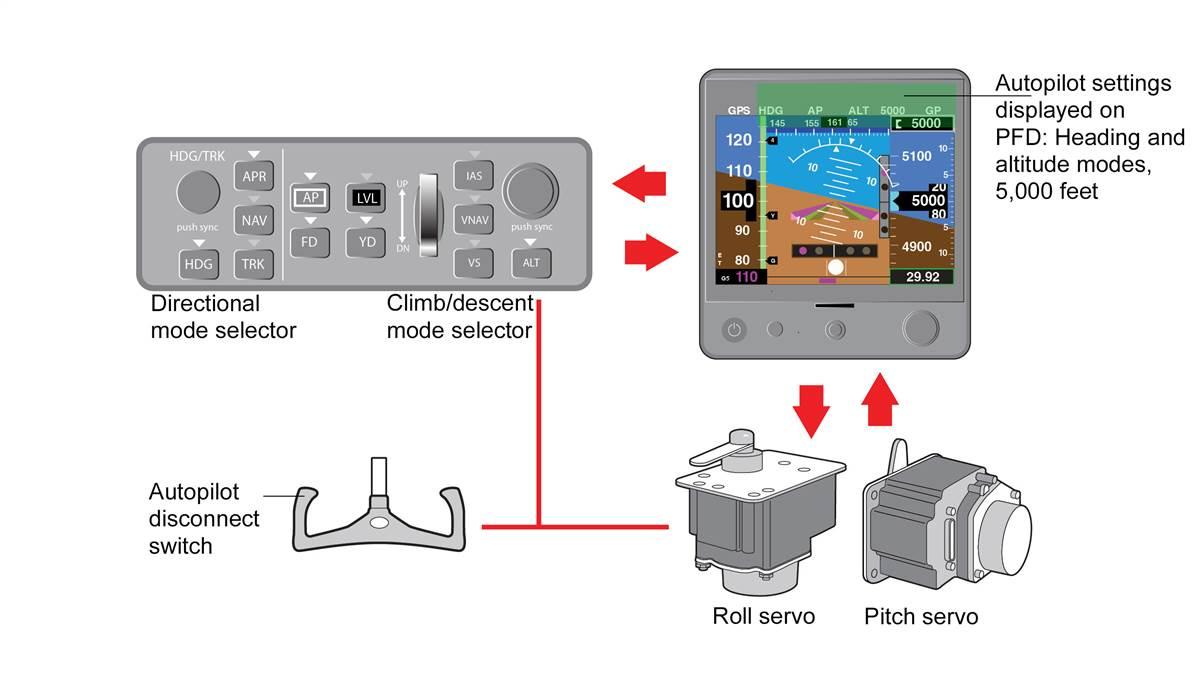Autopilot
Better than a mere human

The original idea was akin to cruise control in a car: Relieve the pilot of boring, mundane, repetitive, and fatiguing chores such as keeping an airplane on heading and altitude for hours at a time. Now, expanded computer power, miniature microprocessors, and sophisticated software allow autopilots to do much more than Sperry ever dreamed.
On a corporate jet, airliner, or military transport, for example, the crew often engages the autopilot shortly after takeoff and disengages it on final approach before landing. The autopilot (or automated flight control system) guides the airplane throughout the climb, cruise, descent, and approach phases of flight, and it does so smoothly and reliably with greater fidelity than any mere human.
Autopilot systems include mechanical servos that connect to aircraft flight controls in one, two, and sometimes three axes. Those servos attach to aileron linkages for roll, elevator for altitude, and trim for yaw.
Many modern, digital autopilots are equipped with “envelope protection” that prevents pilots from inadvertently flying too fast or too slow or rolling too steeply, whether pilots actively engage their autopilots or not. These features are essentially operating in the background and monitoring the airplane at all times.
Autopilots also can be programmed by the flight crew to fly instrument approaches, and they do so with uncanny precision by constantly accounting for crosswinds and up- and downdrafts.
Autopilots are at the core of new safety technology such as Garmin’s pioneering autoland system that enables airplanes to land safely at the airport of its own choosing if the pilot is incapacitated.
Autopilots are sure to have an even more central role in aviation’s future.
They enable autonomous drone flight as well as the next generation of advanced air mobility vehicles now in development.



